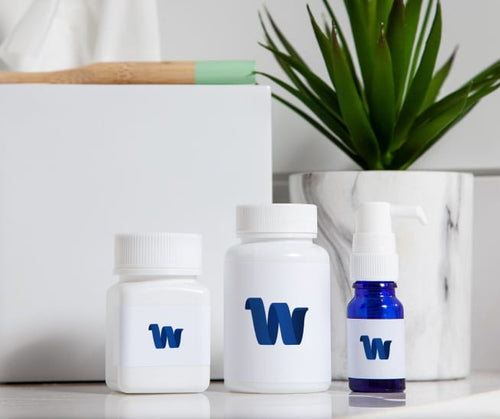Diagnosis, Treatment, and Prevention of Mold Allergy
What is a Mold Allergy?
A mold allergy refers to an adverse immune response triggered by exposure to mold spores. It is characterized by symptoms such as sneezing, coughing, itchy eyes, and respiratory issues. This condition can be triggered by both indoor and outdoor molds, depending on the individual's sensitivity and exposure level.
Indoor and Outdoor Mold Allergies
Indoor mold allergies are often caused by common household molds such as Cladosporium, Penicillium, and Aspergillus. These molds thrive in damp areas like basements, bathrooms, and kitchens. On the other hand, outdoor mold allergies are typically triggered by molds present in soil, plants, and rotting wood, such as Alternaria and Cladosporium. Depending on the climate and weather conditions, outdoor mold spores can be present year-round or be more prevalent during certain seasons. To manage these allergies effectively, it's crucial to understand the specific mold allergen causing your symptoms and take appropriate measures to limit exposure.
What Symptoms Indicate a Mold Allergy?
Mold allergy symptoms are similar to those of other respiratory allergies. They include sneezing, runny or stuffy nose, coughing, postnasal drip, itchy or watery eyes, and dry, scaly skin. Individuals with a mold allergy may also experience wheezing, shortness of breath, and sinus irritation.
Mold Allergy and Asthma
In some cases, exposure to mold can trigger asthma symptoms or exacerbate existing asthma. Mold spores can cause airway inflammation leading to bronchial constriction, coughing, chest tightness, and difficulty breathing. Individuals with a history of asthma are at a higher risk and should take additional precautions to minimize exposure to mold. For more information on managing mold allergies and preventing exposure, visit this guide.
How to Diagnose a Mold Allergy?
Diagnosing a mold allergy begins with a detailed medical history, followed by a physical examination, and then diagnostic tests to identify the specific mold allergen. The main diagnostic procedures include skin prick tests and blood tests.
The Process for Diagnosis
The diagnosis process for a mold allergy typically starts with a review of the patient's medical history and symptoms, followed by a physical examination. The aim is to rule out other conditions that may be causing the symptoms. A healthcare provider may recommend allergy testing if a mold allergy is suspected.
Associated Procedures
The main procedures associated with diagnosing a mold allergy include the skin prick test and the allergen-specific IgE antibody test. The skin prick test involves placing a small amount of mold allergens on the skin using a tiny needle. If the patient is allergic to mold, they will develop a raised bump or hive at the test location. The allergen-specific IgE antibody test, or blood test, measures the amount of mold-specific IgE antibodies in the blood. This test can be helpful if a skin test can't be performed due to certain skin conditions or if the patient is taking a medication that might interfere with skin testing.
How to Treat a Mold Allergy?
Treating a mold allergy involves managing symptoms, reducing exposure to mold, and in some cases, undergoing allergy immunotherapy. The best approach to treatment varies depending on the severity of the allergy and the patient's overall health.
Treatment Options
There are several treatment options for mold allergies. Over-the-counter (OTC) antihistamines and decongestants can help control allergy symptoms. Prescription medications, like corticosteroids, might be prescribed for severe symptoms. Nasal sprays, eye drops, and other topicals can also help manage symptoms. However, for long-term relief, allergy immunotherapy may be recommended. This treatment involves exposing the patient to small amounts of mold allergens over time to build up tolerance. It is important to consult with a healthcare provider to determine the optimal treatment for a mold allergy.
Sublingual Immunotherapy
Sublingual immunotherapy (SLIT) is an effective treatment option for certain types of allergies, including mold. SLIT involves placing a tablet containing a small amount of the allergen under the tongue daily. Over time, this may help reduce the immune system's reaction to the allergen, thereby decreasing symptoms. Studies show that SLIT can be a beneficial treatment for indoor allergens like mold. However, it's essential to discuss this option with a healthcare provider to understand if it's suitable for you.
How to Limit Exposure to Mold?
Limiting exposure to mold is a crucial part of managing mold allergies. This involves identifying and eliminating sources of mold in your environment, maintaining a clean home, and using certain products or devices to reduce mold spores in the air.
Firstly, keep the humidity in your home low, ideally below 50%. High humidity can promote mold growth. Use air conditioners or dehumidifiers to control humidity levels, and ensure your home is well-ventilated, especially areas prone to dampness like bathrooms and kitchens.
Secondly, regularly clean and dry areas where mold is likely to grow. This includes bathrooms, kitchens, and basements. Use mold-killing products in these areas and fix any leaks or sources of dampness promptly. Keep your home clean and dust-free as mold can grow on dust.
Finally, consider the use of air purifiers or filters designed to capture mold spores. These devices can help reduce the number of mold spores in the air, potentially decreasing your exposure. While these measures can be effective, they may not completely eliminate exposure to mold. If you suspect you have a mold allergy, it's important to get tested and discuss further management strategies with your healthcare provider.
What to Do After Exposure to Mold?
After exposure to mold, it's important to monitor your health closely for any allergic reactions or symptoms. If you experience symptoms such as sneezing, runny or stuffy nose, itchy or watery eyes, or cough, it's likely you've had an allergic response to the mold.
The first step is to remove yourself from the mold-infested environment if possible, to limit further exposure. Then, try to alleviate your symptoms. OTC antihistamines can help manage mild symptoms, but always consult your healthcare provider before starting any medication.
If you repeatedly experience symptoms after exposure to mold, it might be time to consider testing for mold allergy. Just as with pollen allergies, an allergist can perform a test to confirm whether you're allergic to mold. If the test is positive, your doctor will discuss treatment options with you, which could include medications or immunotherapy.
How to Prepare for a Mold Allergy Appointment?
Preparing for a mold allergy appointment entails gathering important information and taking steps to ensure you get the most from your visit. It's crucial to note all your symptoms, their frequency, and any potential mold exposure incidents.
Before your appointment, make a list of all the medications, supplements, and vitamins you're currently taking. OTC drugs. It's also beneficial to make a note of any questions you want to ask your allergist. This ensures you don't forget any vital points during your visit.
Documenting your symptoms is equally important. Note their severity, when they occur, and if they seem related to exposure to certain environments. For instance, if your symptoms worsen in damp or musty areas, this could indicate a mold allergy. All this information will help your allergist understand your condition better and devise an effective treatment plan.
How Can You Care for Yourself with a Mold Allergy?
Caring for yourself with a mold allergy involves taking proactive steps to minimize your exposure to mold and effectively managing your symptoms. This can be achieved through environmental control measures and appropriate medical treatments.
Keeping your environment mold-free is the first line of defense. Ensure your home is well-ventilated and dry as mold thrives in damp conditions. Regularly clean your bathrooms and kitchen, areas prone to mold growth. Use dehumidifiers and air purifiers to maintain optimal indoor humidity and air quality.
Managing your symptoms effectively is crucial. OTC antihistamines and nasal corticosteroids can help alleviate allergy symptoms. In severe cases, your doctor may recommend allergy shots (immunotherapy). Always take prescribed medications as recommended by your healthcare provider. Regular exercise and a healthy diet can also boost your immune system and improve your overall health.
Live Allergy-Free with Wyndly
If you want long-term relief from your allergies, Wyndly can help. Our doctors will help you identify your allergy triggers and create a personalized treatment plan to get you the lifelong relief you deserve. Start by taking our quick online allergy assessment today!
Frequently Asked Questions
How do you know if mold is making you sick?
Mold exposure can cause symptoms including sneezing, runny or stuffy nose, itchy eyes, throat or skin, and coughing. More severe reactions include shortness of breath and asthma attacks. If these symptoms persist, particularly in a moldy environment, mold may be making you sick.
Will mold exposure show up in bloodwork?
Mold exposure itself does not show up in bloodwork. However, certain blood tests can detect the presence of specific antibodies produced by your immune system in response to mold exposure. These tests include Immunoglobulin E (IgE) or Immunoglobulin G (IgG) tests, but they are not definitive proof of a mold allergy.
What kind of doctor diagnoses mold exposure?
An allergist or immunologist typically diagnoses mold exposure. These specialists have the expertise to identify allergic reactions to mold, conduct appropriate tests, and recommend a suitable treatment plan. In some cases, a pulmonologist might be involved if respiratory issues are present.
How do I test myself for mold exposure?
Testing for mold exposure is typically done by a healthcare provider via blood or skin tests. Blood tests measure the presence of specific antibodies, while skin prick tests determine allergic reactions to different molds. Personal testing kits are available but are less reliable than professional tests.
What is the best allergy medicine for mold allergies?
The best medication for mold allergies is often antihistamines (like Zyrtec and Claritin), nasal corticosteroids (like Flonase and Nasonex), or decongestants. However, the optimal medication can vary based on individual symptoms and severity. Consultation with a healthcare provider is recommended for personalized treatment.
How do doctors test for mold allergy?
Doctors test for mold allergy by conducting a skin prick test or a specific IgE blood test. The skin prick test involves introducing a small amount of mold allergen on the skin and observing for a reaction. The blood test measures the immune system's response to mold.
How do you test for mold in functional medicine?
In functional medicine, mold exposure is typically diagnosed through a combination of methods. These include a detailed patient history, physical examination, and specific laboratory tests. The lab tests can detect mycotoxins (mold toxins) in urine and measure immune response to mold in blood samples.




